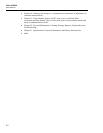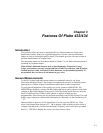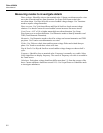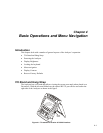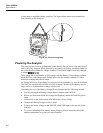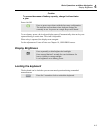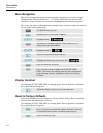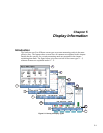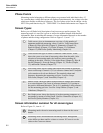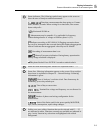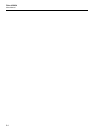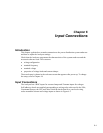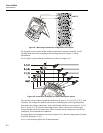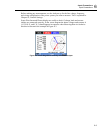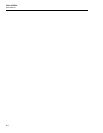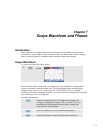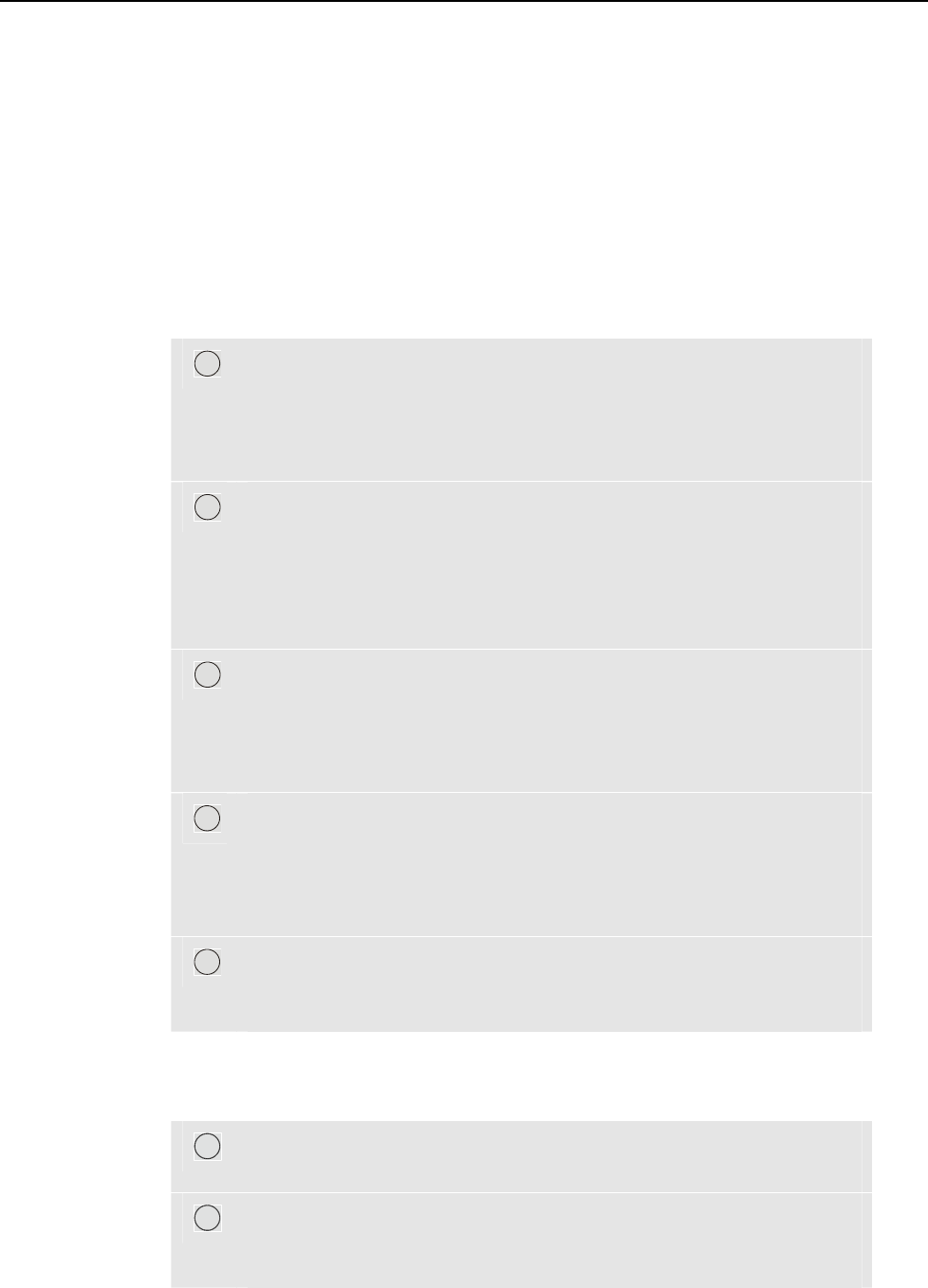
Fluke 433/434
Users Manual
5-2
Phase Colors
Measuring results belonging to different phases are presented with individual colors. If
for a certain phase voltage and current are displayed simultaneously, the voltage color has
a dark tone and the current has a light tone. The set of phase colors can be chosen via the
SETUP key and function key F4 – USER PREF. For detailed information see Chapter 18.
Screen Types
Below you will find a brief description of each screen type and its purpose. The
measuring mode it is used for is given as well as the manual chapter with detailed
information. Bear in mind that the amount of screen information depends on the number
of phases and the wiring configuration. Refer to Figure 5-1, item 1 ... 5.
1
Table screen: gives an instantaneous overview of a big number of
important numerical measuring values. Used for: Volts/Amps/Hertz
(Chapter 8), Dips & Swells (Chapter 9), Harmonics (Chapter 10),
Power & Energy (Chapter 11), Flicker (Chapter 12), Unbalance
(Chapter 13), and Power Quality Monitoring (Chapter 16).
2
Trend screen: this type of screen is related to a table screen. Trend
shows the course over time of measuring values from the table. After
selection of a measuring mode, the Analyzer starts recording all
readings in the table. Used for: Volts/Amps/Hertz (Chapter 8), Dips &
Swells (Chapter 9), Power & Energy (Chapter 11), Flicker (Chapter
12), and Inrush Currents (Chapter 15).
3
Waveform screen: shows voltage and current waveforms as displayed
on an oscilloscope. Channel A (L1) is reference channel and 2 complete
cycles starting at 0 volt are displayed. The nominal voltage and
frequency determine the measuring grid size. Used for: Scope
Waveform (Chapter 7) and Transients (Chapter 14).
4
Phasor screen: shows the phase relation between voltages and currents
in a vector diagram. The vector of reference channel A (L1) points to
the positive horizontal direction. The A (L1) amplitude is also reference
for the measuring grid size. Used for: Scope Phasor (Chapter 7) and
Unbalance (Chapter 13).
5
Bar Graph screen: shows the density of each measuring parameter as a
percentage by means of a Bar Graph. Used for: Harmonics (Chapter 10)
and Power Quality Monitor (Chapter 16).
Screen information common for all screen types
Refer to Figure 5-1, item A ... F.
A
Measuring mode: the active measuring mode is shown in the screen
header.
B
Measuring values: main numerical measuring values. Background
colors differ per phase and for voltage or current. If Cursor is on, the
values at the Cursor are shown.



